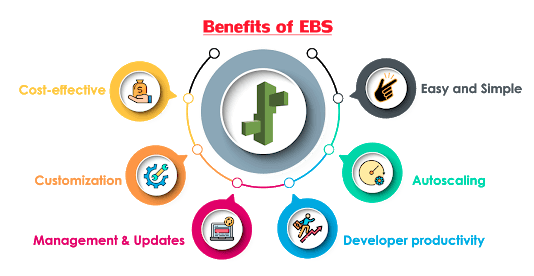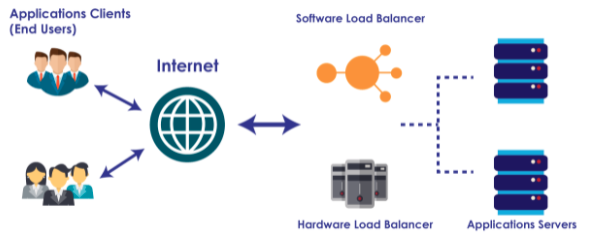In our previous post, we wrote about the Free AWS Interview Questions And Answers for Freshers. Today, we will continue AWS Interview Questions for Intermediate Level (2 years Experience and more). We prepared this topic for people searching for the questions below;
- aws interview questions and answers pdf
- aws interview questions and answers for freshers pdf free download
- aws interview questions for 2 years experience
- aws interview questions for java developers
- aws solution architect interview questions and answers pdf
- aws interview questions and answers for freshers
- aws interview questions glassdoor
- aws interview questions for devops
If you missed the post about the AWS Basic Interview Questions & Answers, then view it before you continue reading. In that tutorial, we stopped at number 20. Therefore, we will continue with Number 21 on this topic so that we can move forward.
21. What is an Elastic Load Balancer (ELB)?
According to avinetworks.com, the definition Elastic Load Balancing scales traffic to an application as demand changes over time. ELB is a load balancing service offered by AWS. Therefore, it shares incoming resources and controls the application traffic to meet traffic demands. As elastic load balancing uses request routing algorithms to distribute incoming application traffic. This is is done across multiple instances or scale them as necessary. Also, it increases the fault tolerance of your applications.
22. What are the types of load balancers in EC2?
Load balancing is defined as the methodical and efficient distribution of network or application traffic across multiple servers in a server farm. This is to say that Load balancing refers to efficiently distributing incoming network traffic across a group of backend servers. It is also known as a server farm or server pool. Each load balancer sits between client devices and backend servers, receiving and then distributing incoming requests to any available server capable of fulfilling them.
There are three types of load balancers in EC2. They are as follows:
Application Load Balancer: The application load balancer is designed to make routing decisions at the application layer. ALC supports dynamic host port mapping and path-based routings.
Network Load Balancer: Network load balancer is designed to make routing decisions at the transport layer. It handles millions of requests per second. Using the flow hash routing algorithm, NCL selects the target from the target groups after receiving a connection from the load balancer.
Classic Load Balancer: Classic load balancer is designed to make routing decisions either at the application layer or transport layer. It requires a fixed relationship between the container instance port and the load balancer port.
23. Explain what is a T2 instance?

T2 instances are Burstable Performance Instances that provide a baseline level of CPU performance with the ability to burst above the baseline. The T2 instance is one of the low-cost Amazon instances that provides a baseline level of CPU performance.
The other explanation is that T2 instances are a new low-cost. It is a General Purpose instance type that are designed to provide a baseline level of CPU performance. They have the ability to burst above the baseline.
24. Mention the security best practices for Amazon EC2.
Security best practices for Amazon EC2 are as below:
- Security and network
- Storage
- Resource Management
- Recovery and Backup
25. While connecting to your instance, what are the possible connection issues one might face?
The following are the connection issues faced by the user:
- User key not recognized by the server
- Permission denied
- Connection timeout
- Cannot connect using user’s browser
- Server unexpectedly closed network connection
- Unprotected private key
- Cannot ping the instance
- Server refused host key
- The private key must begin with “BEGIN RSA PRIVATE KEY” and end with “ END RSA PRIVATE KEY.”
26. What are key pairs in AWS?
First of all, a key pair, consisting of a public key and a private key. This key is a set of security credentials that you use to prove your identity when connecting to an Amazon EC2 instance. The Amazon EC2 stores the public key on your instance, and you store the private key.
Amazon EC2 uses both public and private keys to encrypt and decrypt the login information. The sender uses a public key to encrypt the data and the receiver uses a private key to decrypt the data. Private and public keys are known as key pairs. The public key enables you to access the instance securely and a private key is used instead of a password.
27. What is SimpleDB?
SimpleDB is one of Amazon’s services offered by AWS. It is a distributed database and highly available NoSQL data store that offloads the work of database administrators. Meaning that Amazon SimpleDB is a highly available NoSQL data store that offloads the work of database administration.
28. What is Elastic Beanstalk?
The popular Elastic Beanstalk is the best service offered by AWS for deploying and managing applications. First and foremost, it helps applications developed in Java, .Net, Node.js, PHP, Ruby, and Python. So, when you deploy the application, Elastic beanstalk builds the chosen supported platform versions. The AWS services includes; S3, SNS, EC2, cloud watch. It also provides autoscaling to run your application.
29. Mention a few benefits of the Elastic beanstalk.

Following are the few benefits of the Elastic Beanstalk:
- Easy and simple: Elastic Beanstalk enables you to manage and deploy the application easily and quickly.
- Autoscaling: Beanstalk scales up or down automatically when your application traffic increases or decreases.
- Developer productivity: Developers can easily deploy the application without any knowledge, but they need to maintain the application securely and be user-friendly.
- Cost-effective: No charge for Beanstalk. Charges are applied for the AWS service resources which you are using for your application.
- Customization: Elastic Beanstalk allows users to select the configurations of AWS services that users want to use for application development.
- Management and updates: It updates the application automatically when it changes the platform. Platform updates and infrastructure management are taken care of by AWS professionals.
30. Define regions and availability zones in Amazon EC2.

AWS give you Free Access to Cloud Computing. Industry Leading Security with Agile & Reliable Services. Amazon web service has a global infrastructure that is divided into availability zones and regions. Each region is divided into a geographic area and it has multiple isolated locations called availability zones. Amazon EC2 is hosted in multiple locations world-wide. These locations are composed of Regions, Availability Zones, Local Zones, AWS Outposts, and Wavelength.
31. What is Amazon EC2 Root Device Volume?
When the developer launches the instance, the root device volume is used to boot the instance that contains the image. When the developer introduces the Amazon EC2, all AMIs are propped up by an Amazon EC2 instance store. Instance store-backed instances – The root device is temporary. If you stop the instance, the data on the root device vanishes and cannot be recovered.
32. What is Server Load Balancing?
A Server load balancer (SLB) provides content delivery and networking services using load balancing algorithms. SLB distributes the network traffic equally across a group of servers to ensure high-performance application delivery.
33. How does a server load balancer work?

The server load balancer works based on two approaches. They are:
- Transport level load balancing
- Application-level load balancing
34. What are the advantages of the Server load balancer?
The advantages of server load balancer are as follows:
- Increases scalability
- Redundancy
- Maintenance and performance
35. Explain the process to secure the data for carrying in the cloud.
One thing that must be taken into consideration is that no one should resize the data while it is moving from one point to another. The other thing to consider is there should not be any kind of leakage with the security key from the multiple storerooms in the cloud. Dividing the information into different types and encrypting it into valid methods could help you in securing the data in the cloud.
36. What are the layers available in cloud computing?
Below listed are the various layers of cloud computing
| Related Article: Cloud Computing Platform |
37. Explain the layers of Cloud architecture?
We have five different types of layers available, which are:
- SC- Storage controller
- CC- cluster controller
- NC- Node controller
- Walrus
- CLC- cloud controller
38. What are the reserved instances?
It is nothing but a reservation of resources for one or three years and utilized whenever you need it. The reservation comes on a subscription basis available for a term of 1 year and three years. The hourly rate goes down as the usage increases. Purchasing reservations isn’t just associated with the reservation of resources, but also, comes with the capacity that is required for a particular zone.
39. What is meant by a cloud watch?
Cloud watching is a monitoring tool in Amazon Web Services with which you can monitor different resources of your organization. You can have a look at various things like health, applications, network, etc.
40. How many types of cloud watches do we have?
We have two types of cloud watches: essential monitoring and detailed monitoring. The necessary tracking will come to you free of cost. However, when it comes to detailed control, you need to pay for it.
41. Explain the cloud watch metrics that are meant for EC2 instances?
The available metrics for EC2 instances are Disk reads, CPU utilization, network packets out. It also includes; CPUCreditUsage, Disk writes, network packets, networkOut, and CPUCreditBalance.
42. What would be the minimum and maximum size of the individual objects that you can store in S3?
Officially, the minimum size of the object that you can store in S3 is 0 bytes. Additionally, the maximum size of an individual object that you can save is 5TB.
43. Explain the various storage classes available in S3?
Below mentioned are the storage classes available in S3.
- Standard frequency accessed
- One-zone infrequency accessed
- RRS – reduced redundancy storage
- Standard infrequency accessed
- Glacier
44. What are the methods to encrypt the data in S3?
We have three different methods available for encrypting the data in S3. They are as follows.
- First one is the Server-Side Encryption – C
- Secondly, the Server-Side Encryption – S3
- Thirdly, the Server-Side Encryption – KMS
45. On what basis the pricing of the S3 is decided?
The pricing for S3 is decided by taking into consideration the below topics.
- Data transfer
- Storage used
- Number of requests
- Transfer acceleration
- Storage management
This is where we draw the curtain on todays tutorial. We hope we have been able to pass some useful knowledge to you. If you know all these questions and answers on this page, be sure to pass any interview and secure a Tech Job. In our next post, we will look at the AWS interview questions for advanced class and professionals. Lastly, we urge you to subscribe to our updates for more.
If you missed the previous post about the AWS Basic Interview Questions & Answers, then view it before you continue reading.
AWS Interview Questions for Intermediate Level (2years Experience Job).
Also, we have the AWS Interview Questions for Advanced Level for Experts.
Frequently Asked AWS Interview Questions – PDF free download.







